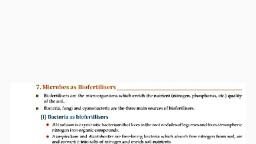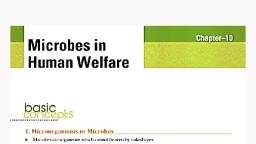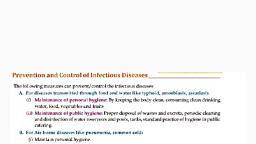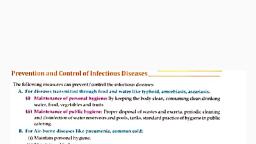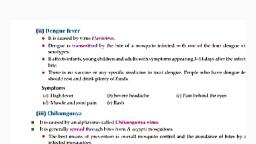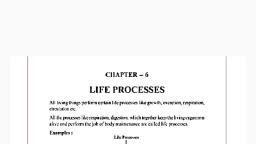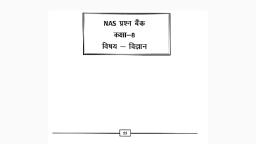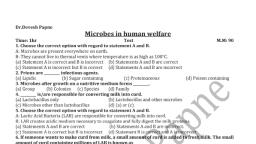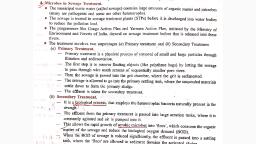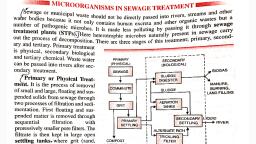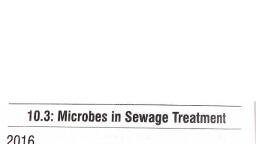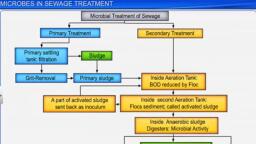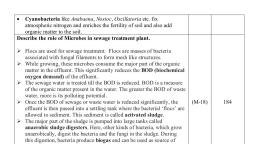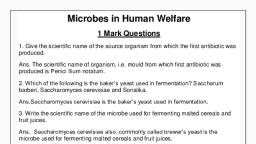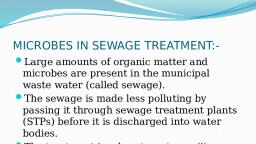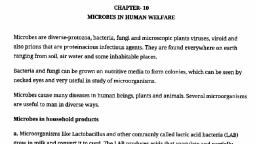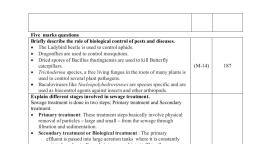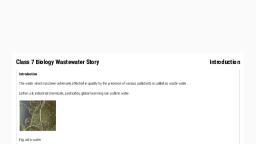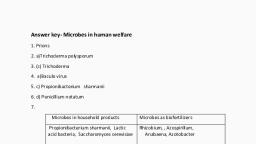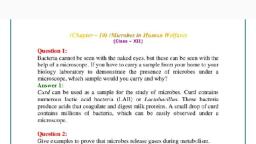Page 1 :
4. Microbes in Sewage Treatment, is the municipal waste water, containing large quantities of human excreta., Sewage, Need, for sewage treatment: Sewage contains large amounts ot organic matter and pathogenic, microbes. Before discharging into natural bodies, ewage is made less polluting, is treated in sewage treatment plants (STT>)., Sewage, Action Plan and Yamuna Action lan have been initiated by Ministry of Environment and, Ganga, Forests, under which large number of STPs will be build to treat sewage before their discharge in, , to reduce their polluhon., treatment is carried out in two stages:, Sewage, ivers, , (i) Primary treatment or physical treatment, the physical removal of large and small particles from sewage., Itis, First, the loating debris is removed by sequential filtration by passing through wire mesh sereens., the grit (soil and small pebbles) are removed by sedimentation in setting tanks. The, Then,, sediment is called primary sludge and the supernatant is the effuent., The eftluent is taken for secondary treatment., , (i) Secondary treatment or biological treatment, , Primary, suppy, , effluent is passed into large aeration tanks with constant mechanical agitation and air, , aerobic microbes grow rapidly and form locs., Useful, Flocs are masses of bacteria asuciated with fungal filaments to form mesh-like structures., growing microbes consume organie matter and thus reduce the biochemical oxygen demand, , The, (BOD), , BOD of sewage has reduced, the eftluent is passed into settling tank., When, Here,, the bacterial tlocs settle and the sediment is called activated sludge., A small part of the sludge is used as an inoculum in the aeration tank and the remaining part is, passed into large tanks called anaerobic sludge digesters., In, the digesters, heterotrophic microbes anaerobically digest bacteria and fungi in sludge, producing mixture of gases such as methane, hydrogen sulphide (1,5) and CO, which form the, biogas., is now released into rivers and streams, Eftluent, , Biological Oxygen Demand (BOD), BOD, by, , refers to the amount of oxygen consumed if all the organic matter in one litre of water is oxidised, cteria., , measures the amount, BOD, measure, microbes, hus it, , of organic matter in water by measuring the rate of oxygen uptake by, of organic mater present in water., BOD indicates higher polluting potential., 1s, , Higher, , Microbes in Human Weltare, , 367
Page 3 :
5. Microbes in Production of Biogas, mixture of inflammable gases (methane, CO, etc) produced by microbial activity that can, be used as fucl (mainly methane, CI, Methanobacteriam,, anaerobically breaks down cellulosic material ti, Methanogens, partieularly, produce CO, and I 1, in, ) Anaerobic sludge in sewage treatment plants., (i) Rumen (a part of stomach) of cattle, thus providing nutrition to cattle., Indian Agricultural Research Institute (1ARI) and Khadi and Village Industries Commission (KVIC, developed the technology of biogas in India., Biogas, , is a, , Mechanism of Biogas or Gobar Gas Production, raw material for biogas production is exereta (dung) of catte called Gobar which is rich in these, The, acteria,, , The biogas plant has a concrete tank(10-15 feet deep) in which bio-wastes and surry of dung is collected, , Dung, , Gas, , -Studge, , Water, , Gas hokler, , -CH+CO*H%S+ NH3], , Digester, , Fig 10.1. A typical biogas plant, , tank has a floating cover which rises on production of gas in the tank., Methanobaeterium in the dung act on the bio-wastes to produce biogas., gas produced is supplied to nearby houses by an outlet., The, The, , Through another outlet, the spent slurry is removed to be used as fertiliser., is used as fuel før co0king arnd lighting., , Biogas
Page 4 :
Mixing pit, , Gas pipe, (Distributie, pe (Distribution, (Distribution, , Gas holder, , pipe), , OutlettankK, , Sround, , Ground, , w, , level, , Level, , E, , Outlet pipe, , Guide pipe, , Inlet pipe, -, , Slurry, , Partition wall




